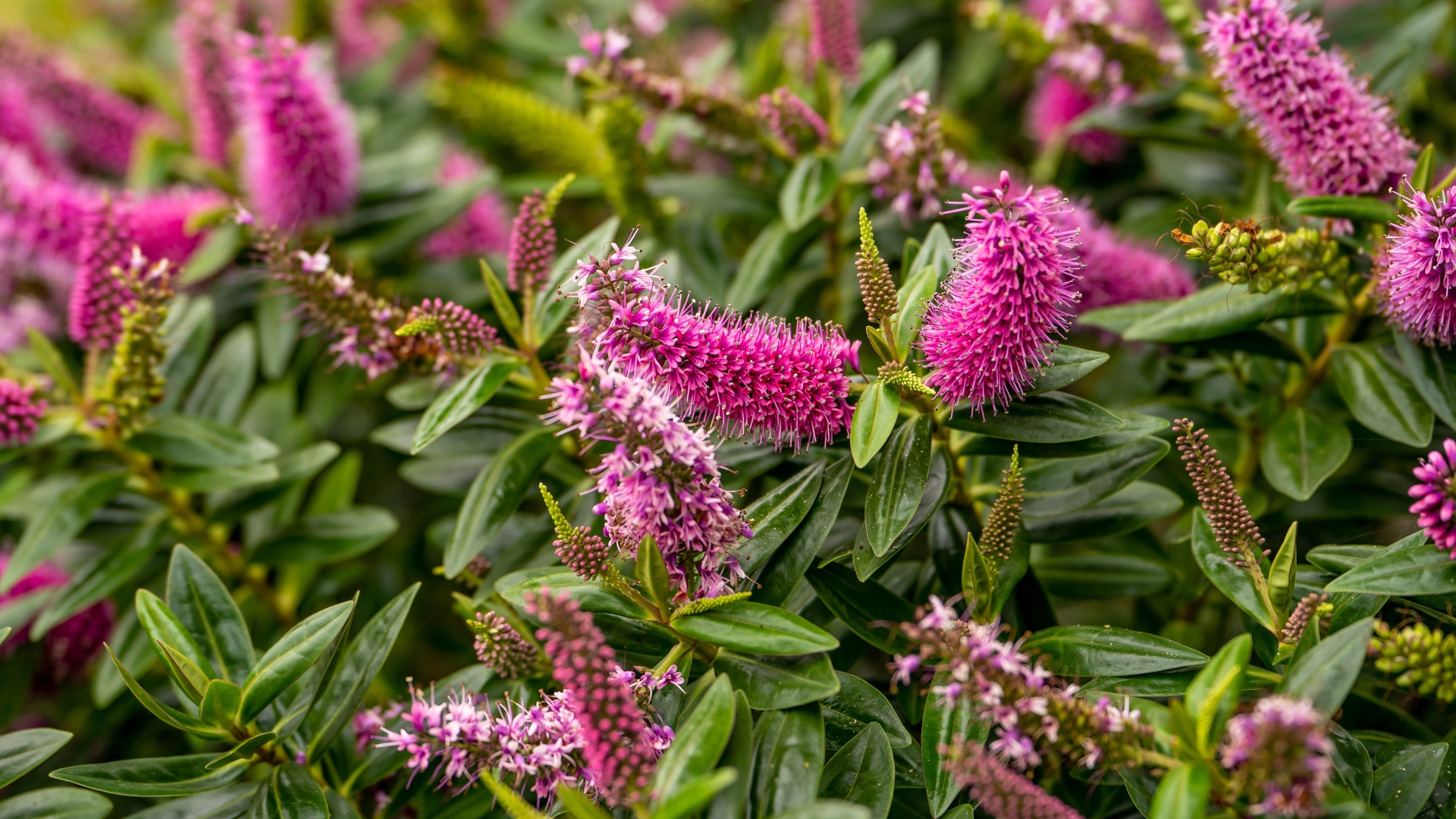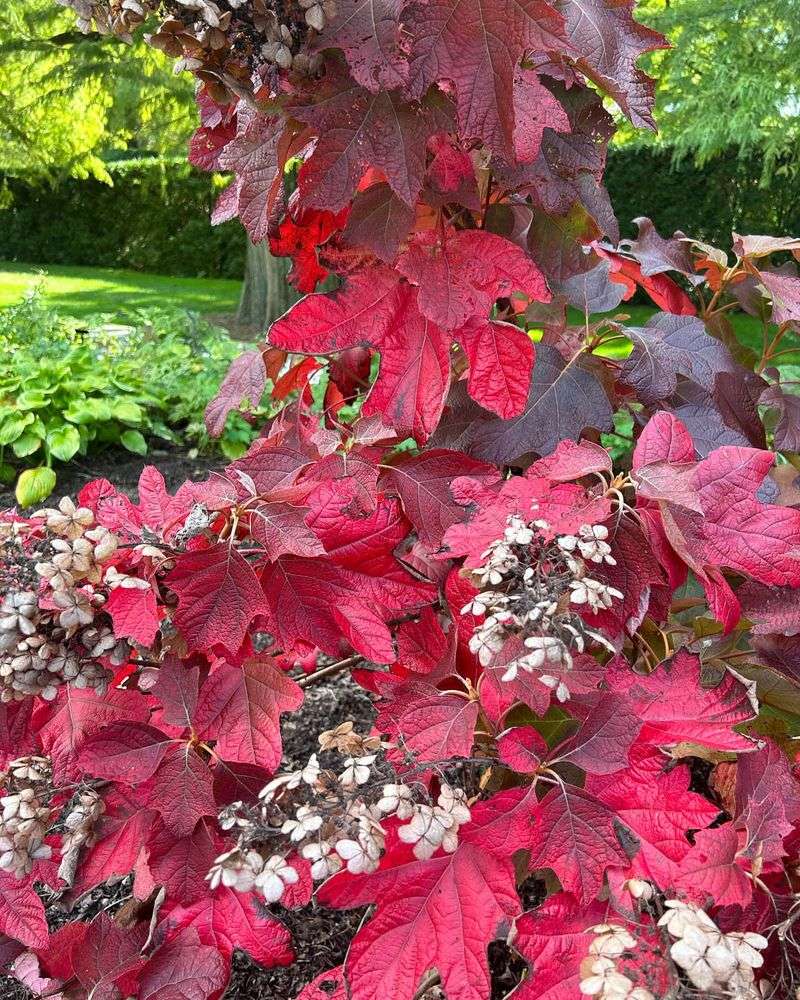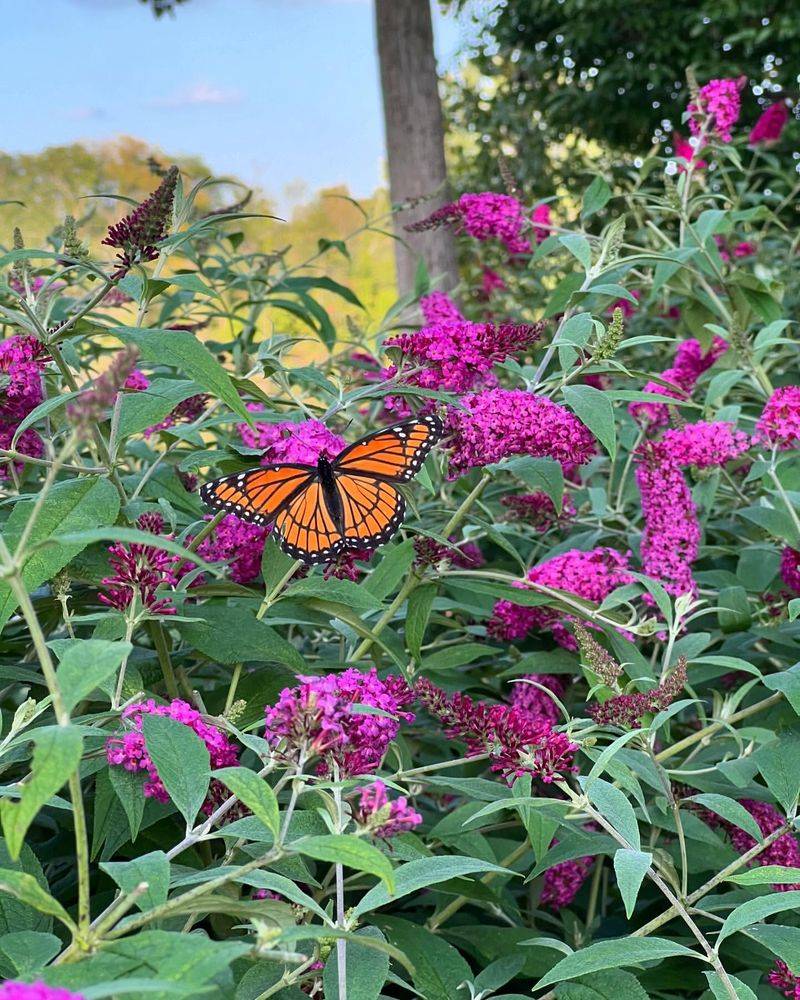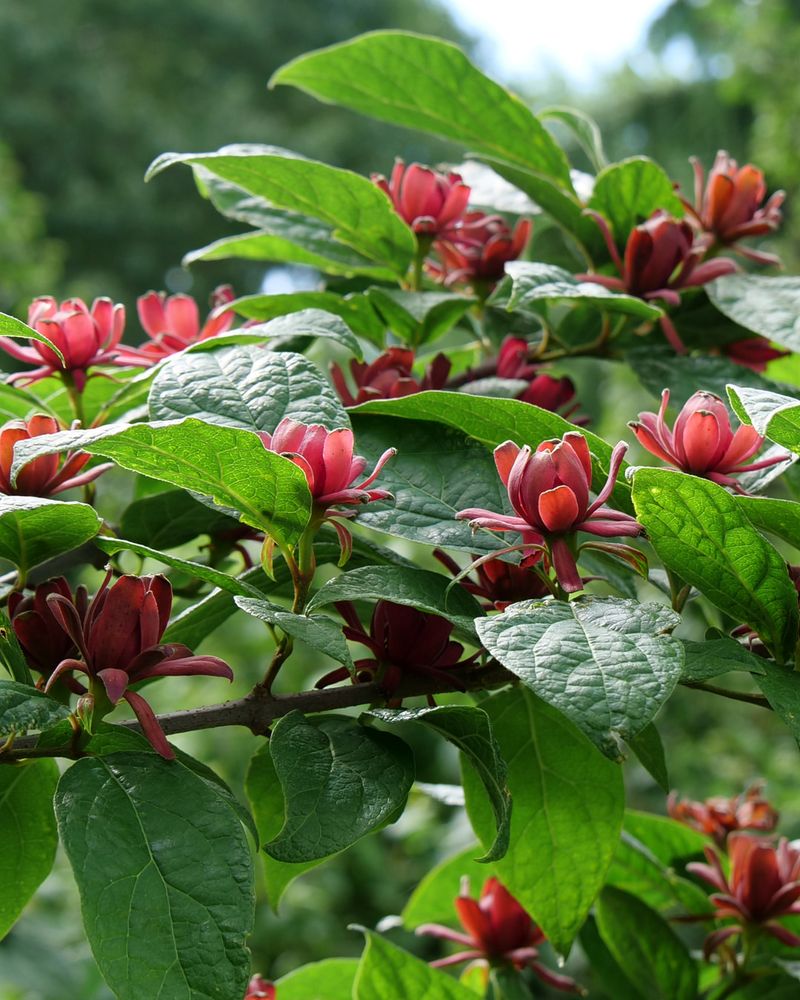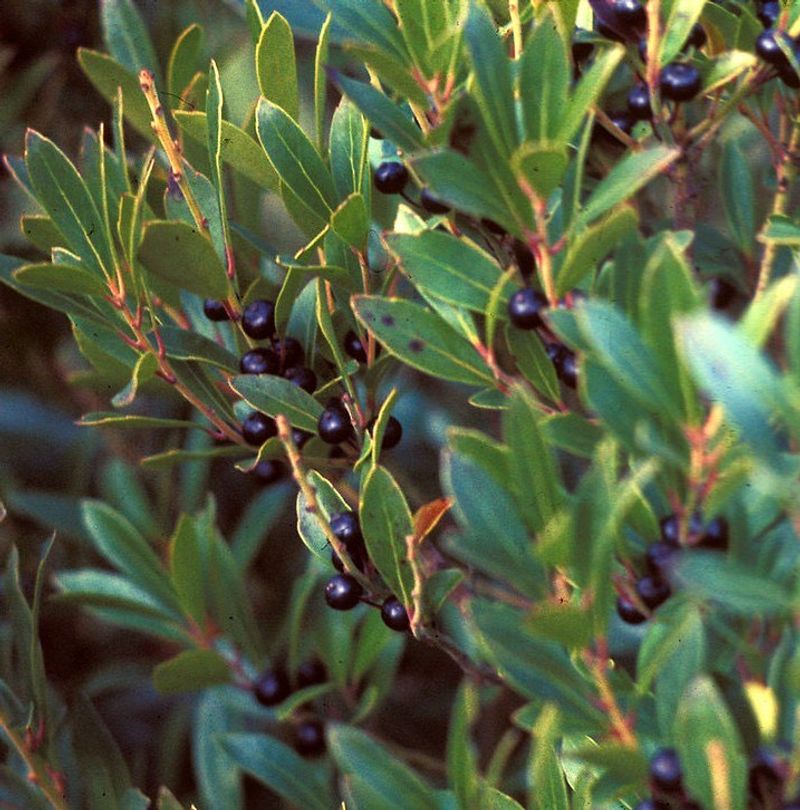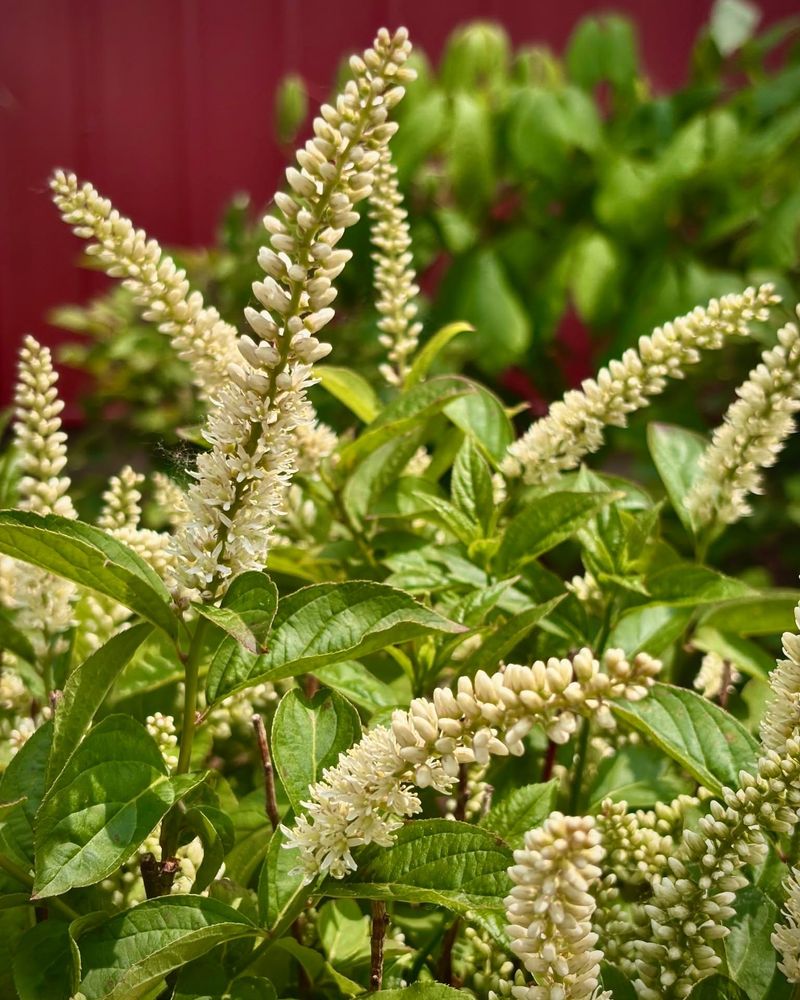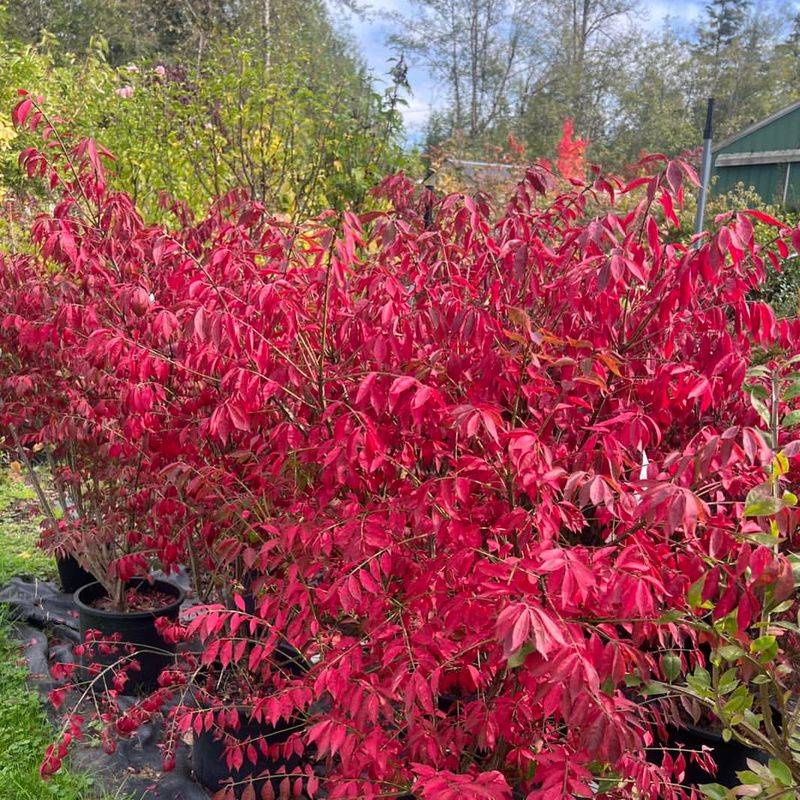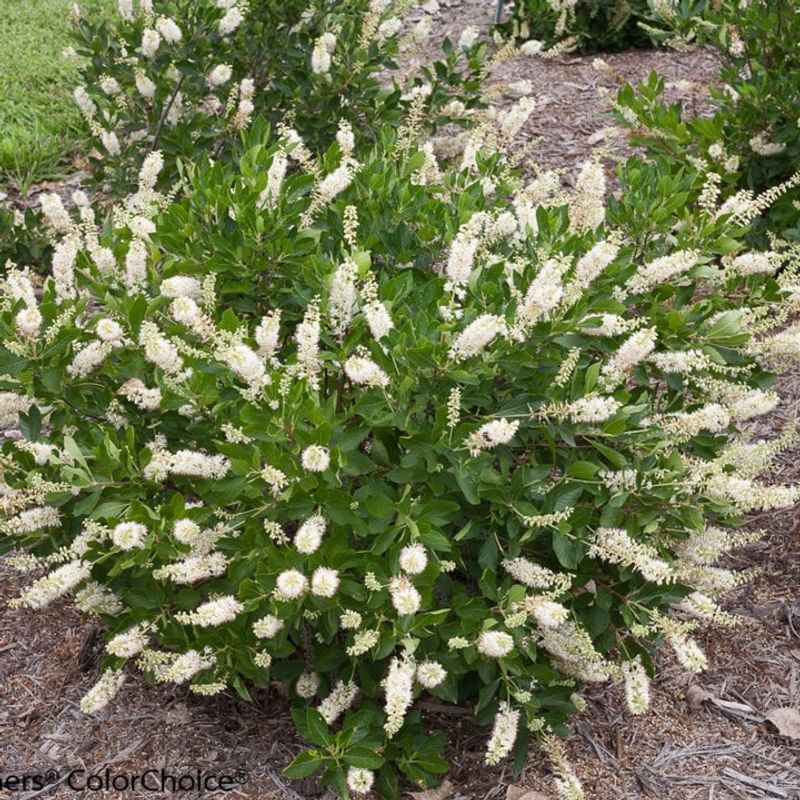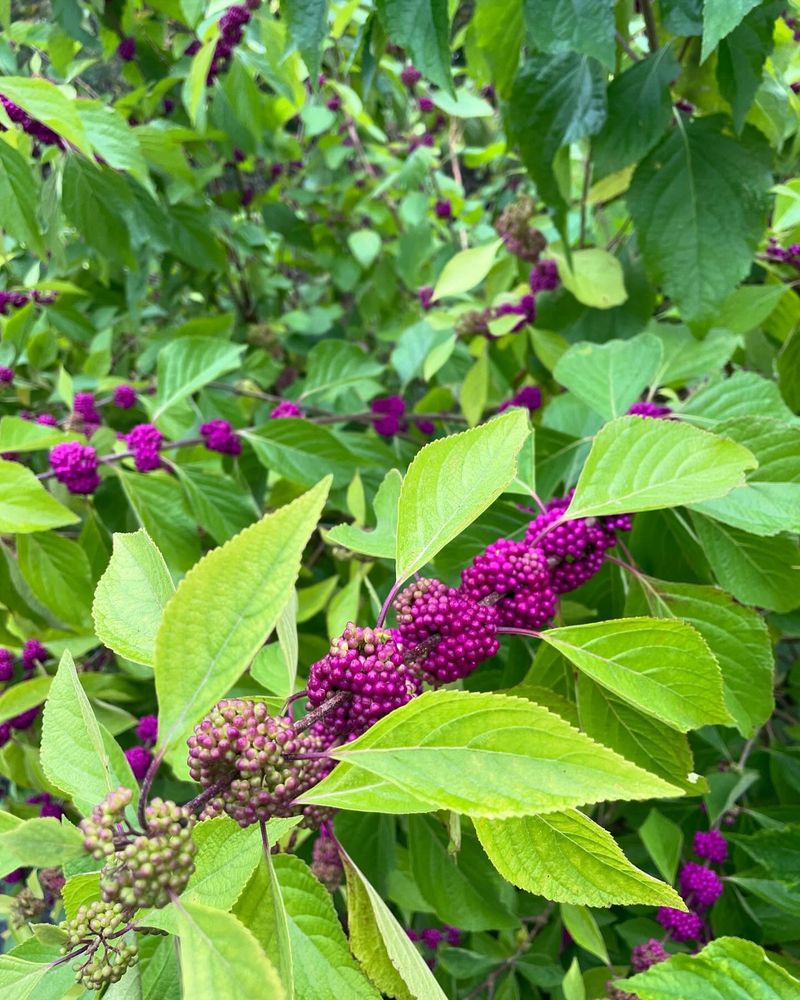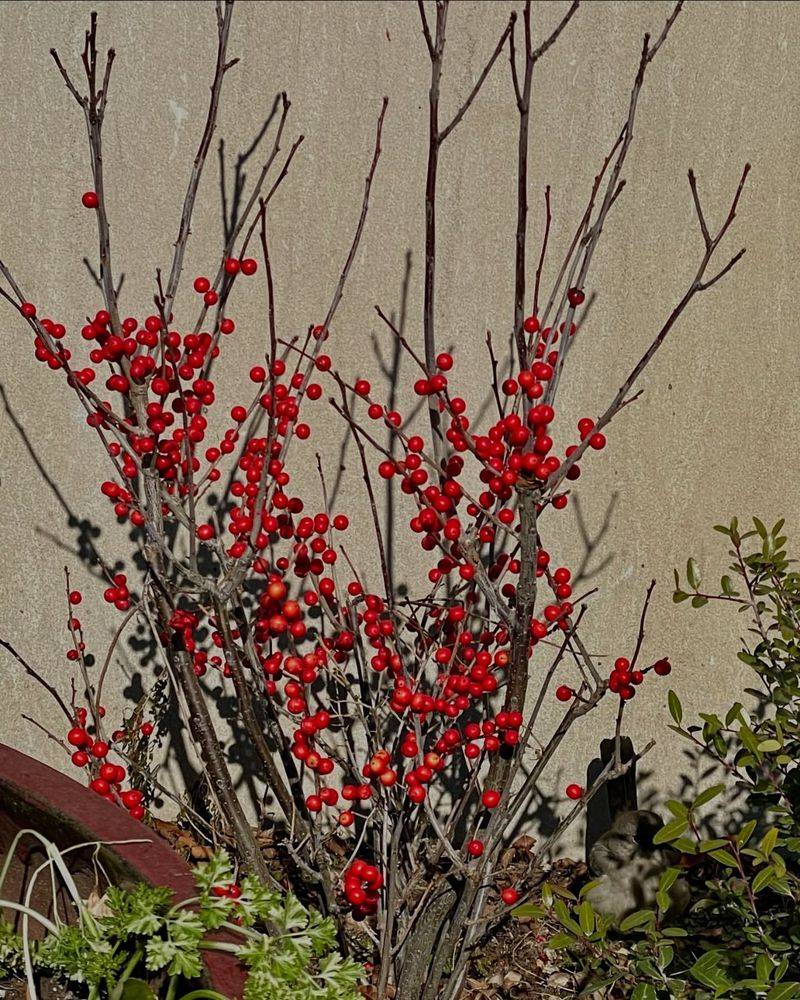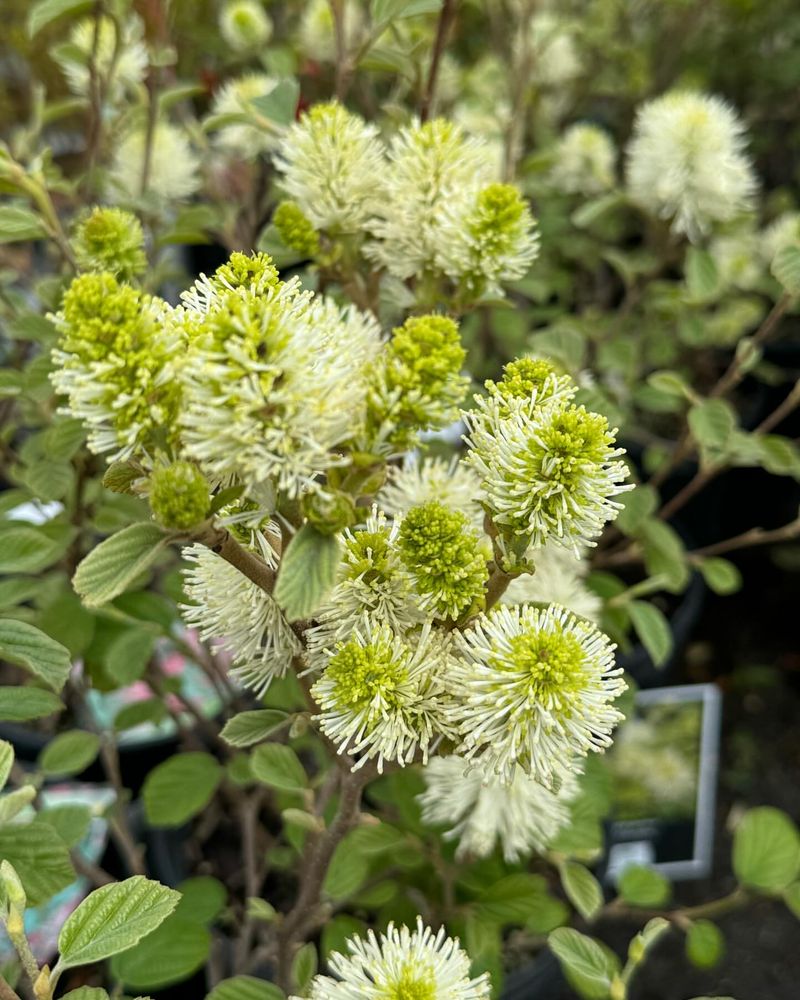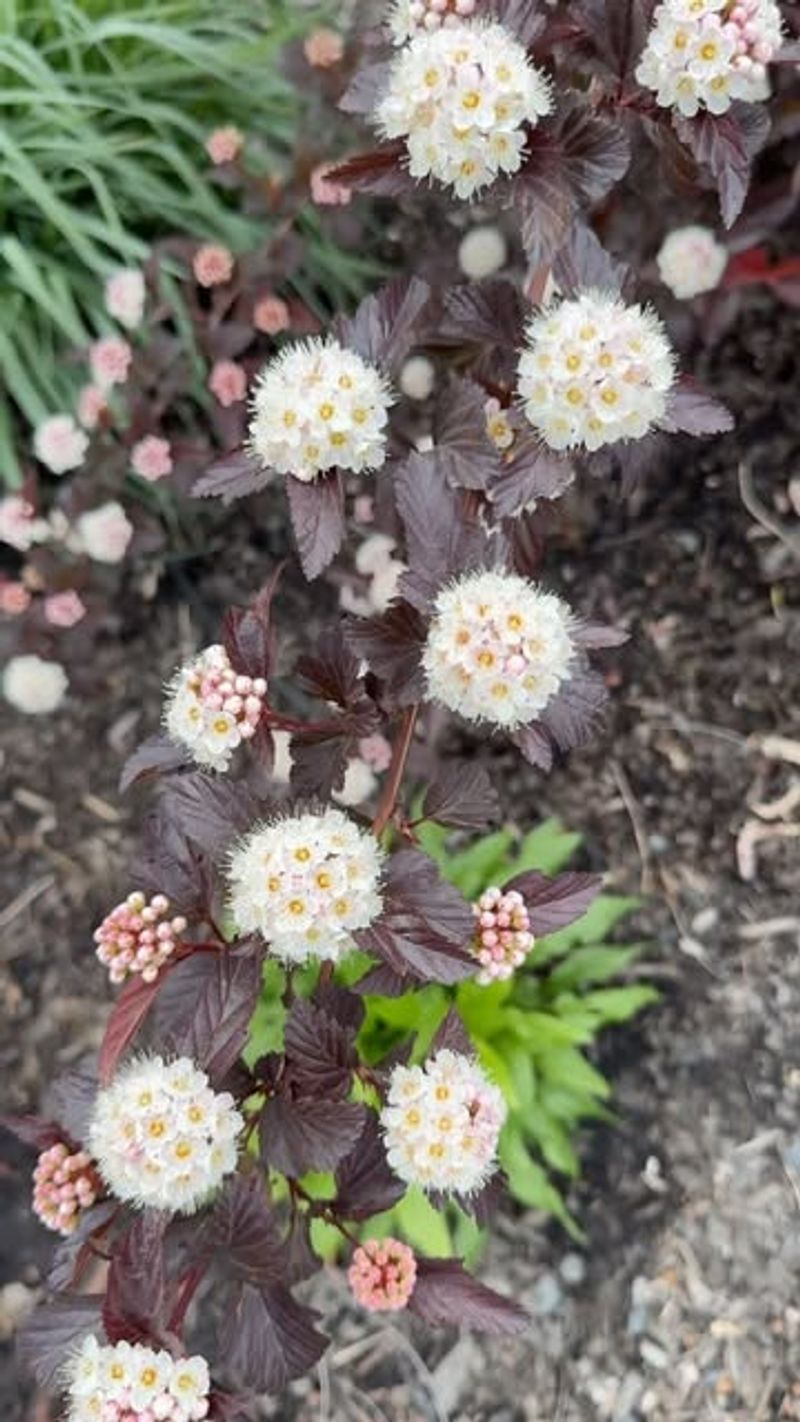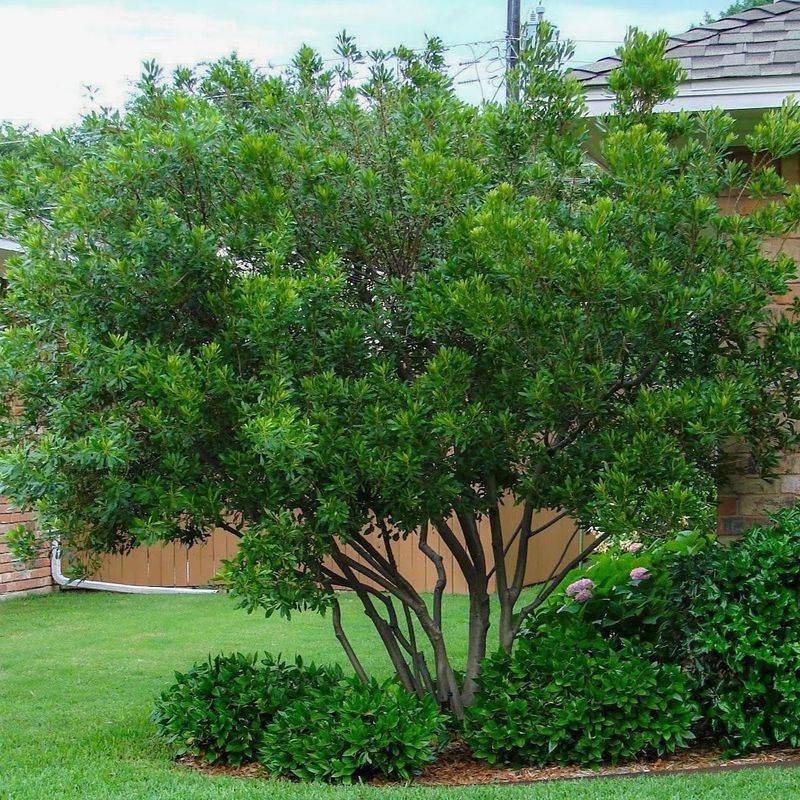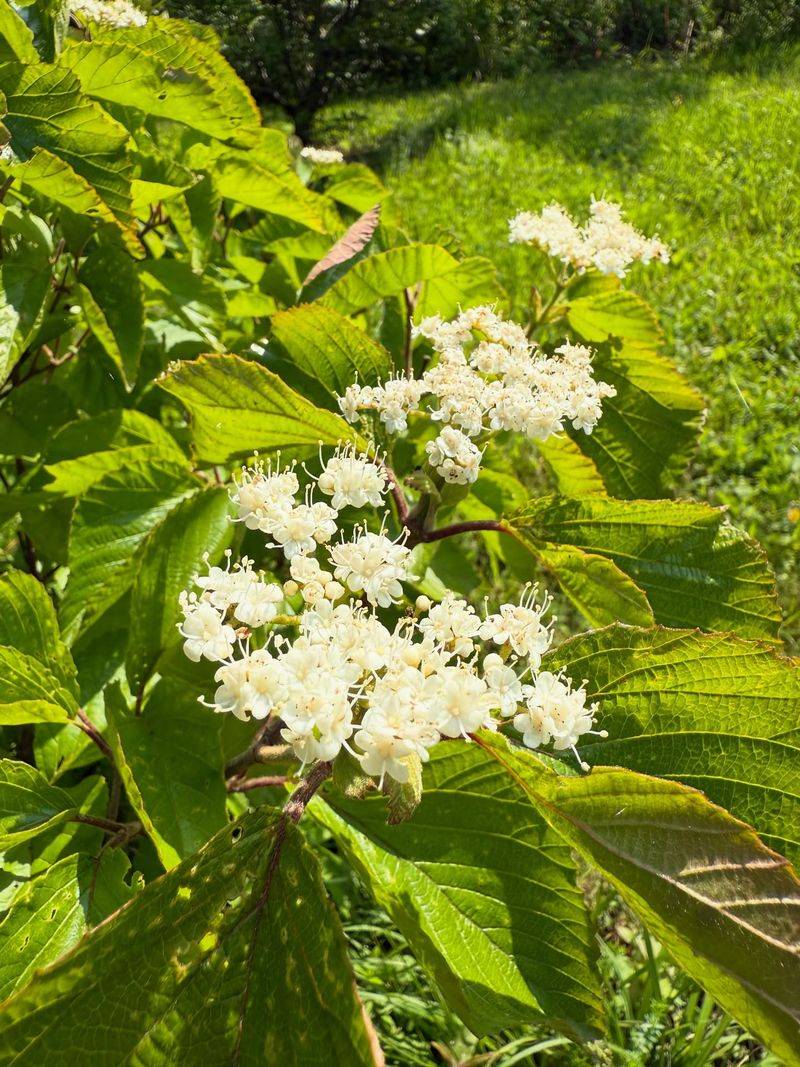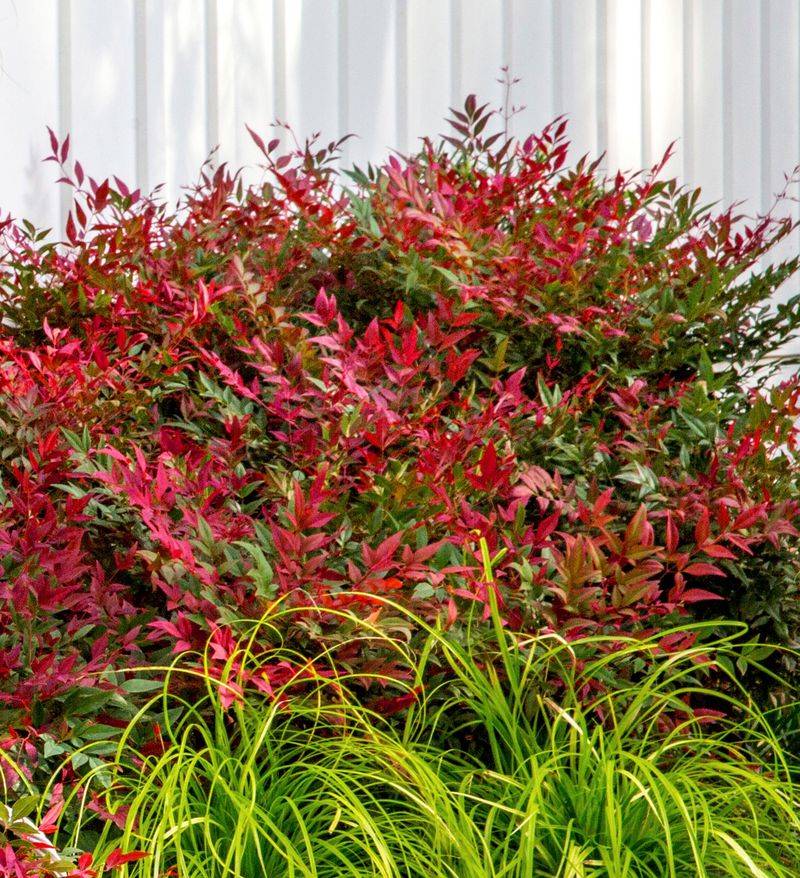North Carolina’s mix of sunshine and rain is just right for these easygoing perennial bushes. I’ve planted a few in my yard, and they come back strong every year without much fuss.
They’re the kind of plants that make you feel like a pro without trying too hard. Once they settle in, they handle the weather like champs. If you love low-maintenance beauty, these bushes are a solid pick!
1. Oakleaf Hydrangea
Native to the southeastern United States, this stunning hydrangea variety feels right at home in North Carolina’s climate. The distinctive oak-shaped leaves turn brilliant burgundy in fall, creating a dramatic backdrop in any garden.
White flower clusters gradually transition to pink as the season progresses. Many North Carolina gardeners appreciate how this adaptable bush thrives in partial shade and doesn’t mind the occasional drought once established.
2. Butterfly Bush
Aptly named for its ability to attract colorful visitors, this bush becomes a buzzing hotspot in summer gardens. Fragrant flower spikes in purple, pink, or white release a honey-like scent that’s irresistible to pollinators.
Trimming it back in late winter encourages more prolific blooming the following season. Across North Carolina, gardeners value this drought-tolerant performer for its long blooming period and minimal care requirements.
3. Carolina Allspice
Sometimes called sweetshrub, this native plant brings a delightful fragrance to North Carolina landscapes. The unusual reddish-brown flowers emit a sweet, fruity scent often compared to strawberries or pineapple, especially after a warm spring rain.
Growing naturally throughout the state, this carefree bush asks for little while providing multi-season interest. The aromatic leaves and bark add sensory appeal even when the plant isn’t flowering.
4. Inkberry Holly
For those tricky spots where nothing seems to grow, inkberry holly offers an elegant solution. This native evergreen tolerates both wet feet and occasional drought, making it perfect for North Carolina’s unpredictable weather patterns.
Female plants produce small black berries that persist through winter, providing food for birds. The glossy, dark green foliage maintains its good looks year-round without the prickly edges of its holly cousins.
5. Virginia Sweetspire
Graceful arching branches loaded with fragrant white flower spires make this native shrub a standout in early summer. The delicate flowers seem to float above the foliage, creating a dreamy effect in woodland gardens.
Fall brings a spectacular transformation as the leaves turn vibrant shades of orange, red and purple. Throughout North Carolina, gardeners appreciate how this adaptable plant handles both wet soils and dry spells with equal aplomb.
6. Dwarf Burning Bush
While ordinary throughout summer, this unassuming shrub transforms into a showstopper come autumn. The compact growth habit makes it perfect for smaller North Carolina gardens where space is at a premium.
Fiery red fall foliage creates the illusion that the bush is aflame, hence its evocative name. Easy to shape if desired, but equally happy to maintain its naturally rounded form without regular pruning.
7. Summersweet
Fragrant white or pink flower spikes appear in late summer when many other shrubs have finished blooming. The sweet vanilla scent draws butterflies and bees from all corners of the garden, creating a lively pollinator paradise.
Native to eastern North Carolina’s wet woodlands, this adaptable bush thrives in locations where other plants struggle. The golden fall foliage provides an additional season of interest before winter sets in.
8. Yaupon Holly
Small, bright red berries adorn this versatile evergreen throughout winter, creating striking contrast against the dense green foliage. Birds flock to the nutritious berries when food becomes scarce during colder months.
Native to North Carolina’s coastal regions, yaupon holly tolerates salt spray and sandy soils with ease. The compact dwarf varieties make excellent foundation plantings or low-maintenance hedges that need minimal shaping.
9. Beautyberry
Clusters of vibrant purple berries encircle the stems of this eye-catching native bush in early fall. The unusual fruit color stops garden visitors in their tracks and provides an unexpected splash of color when many plants are fading.
North Carolina gardeners appreciate how this carefree plant thrives with almost no attention. The berries persist well into winter, feeding birds and adding visual interest to the dormant garden landscape.
10. Winterberry
Brilliant red berries studding bare branches create a dramatic winter silhouette in the dormant garden. This deciduous holly drops its leaves to better showcase the colorful fruit display that brightens gray winter days.
Thriving in North Carolina’s varied soils, winterberry tolerates both wet conditions and occasional dry spells. Plant both male and female specimens to ensure the spectacular berry production that makes this native shrub so desirable.
11. Spicebush
Tiny yellow flowers appear on bare branches in early spring, signaling winter’s end before most other plants have awakened. The aromatic leaves release a spicy fragrance when crushed, giving this native plant its descriptive name.
Butterfly enthusiasts throughout North Carolina treasure spicebush as a host plant for the stunning spicebush swallowtail. Female plants produce bright red berries in fall that contrast beautifully with the golden-yellow foliage.
12. Fothergilla
Bottlebrush-like white flowers cover this charming native bush in spring, emitting a subtle honey scent that attracts early pollinators. The unusual blooms appear before the leaves, creating a distinctive silhouette in the awakening garden.
Come autumn, the foliage puts on a spectacular show of orange, yellow and red. North Carolina gardeners in both mountains and coastal plains find this adaptable plant performs beautifully with minimal care.
13. Ninebark
Clusters of delicate white or pink flowers blanket this hardy native in late spring, creating a frothy, cloud-like effect. The exfoliating bark reveals multiple layers of color, providing winter interest when the plant is dormant.
New cultivars offer purple or golden foliage options for North Carolina gardeners looking to add year-round color to the landscape. Remarkably drought-tolerant once established, ninebark thrives even in poor soil conditions where other plants struggle.
14. Southern Wax Myrtle
Aromatic gray-green foliage releases a pleasant bayberry scent when brushed against or crushed. This versatile evergreen native creates an excellent privacy screen or windbreak for North Carolina coastal properties.
Small bluish berries on female plants attract songbirds throughout winter. The deep root system helps stabilize soil on slopes and banks, preventing erosion while requiring almost no maintenance once established.
15. Viburnum
Showy flower clusters in spring give way to colorful berries that transform from green to pink to blue-black as they ripen. The diverse viburnum family offers North Carolina gardeners endless options for different garden situations.
Many varieties feature fragrant blooms and spectacular fall color in addition to their ornamental berries. From compact doublefile types to larger native selections, there’s a viburnum perfectly suited for nearly any spot in the landscape.
16. Abelia
Delicate pink-tinged white flowers appear continuously from summer through fall, attracting hummingbirds and butterflies to their nectar. The glossy foliage often takes on burgundy highlights, especially in cooler weather.
Semi-evergreen in most parts of North Carolina, abelia provides nearly year-round interest with minimal care. The graceful arching branches create a naturally pleasing form that rarely needs pruning to maintain its attractive shape.
17. Nandina
Often called heavenly bamboo, this easy-care evergreen brings multi-season interest to North Carolina gardens. Delicate compound leaves create a ferny texture that contrasts beautifully with other broader-leaved plants in the landscape.
White flower clusters in spring develop into bright red berries that persist through winter. New growth emerges with reddish tints, and the entire plant often takes on burgundy hues during cooler months for year-round color.

